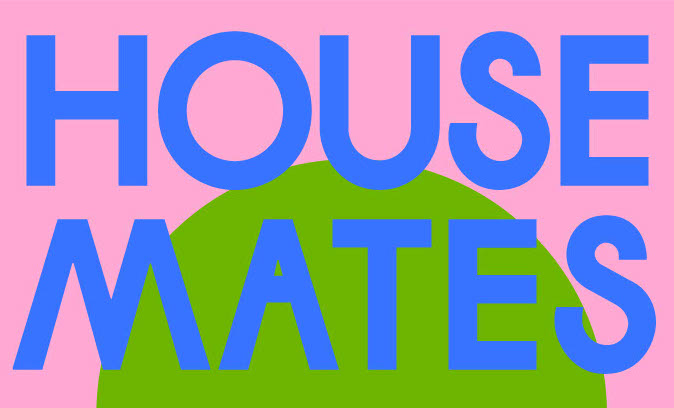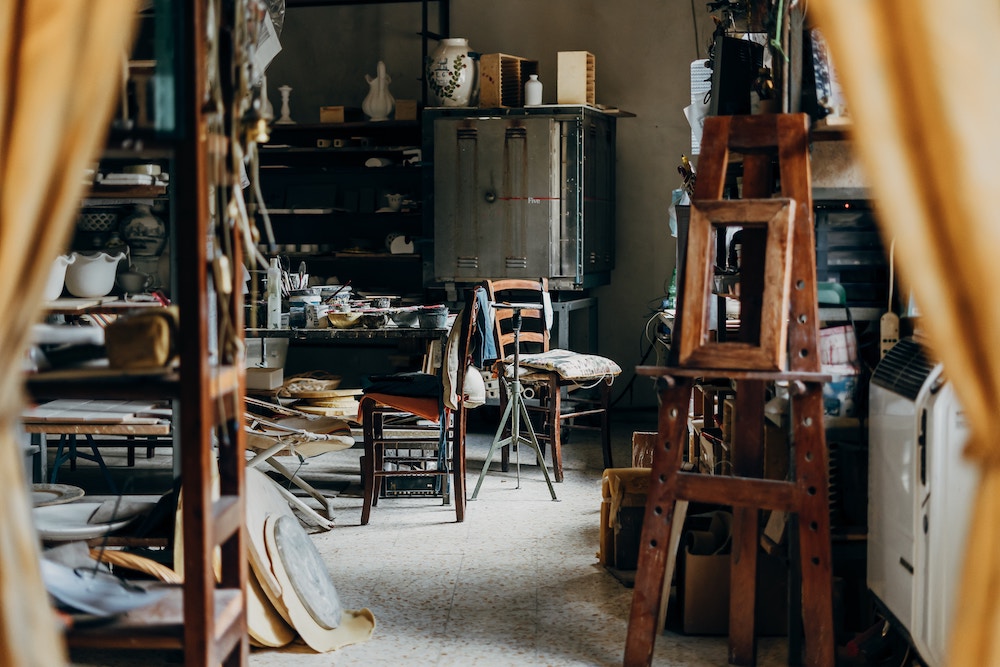Reading Lists
7 Books About Crafting and Creating
‘The Curse of the Boyfriend Sweater’ author offers the best literature about knitters, weavers, and other makers of things

Iam pretty much never not knitting. When I’m on my way to work, I knit on the subway; when I arrive, I knit during meetings (my workplace is fairly chill). When I meet my friends at bars and shows, I knit as long as it’s not a glaring distraction, and when I am home by myself I like to knit a couple of rows before bed.

Knitting, in short, permeates every part of my life. I learned to do it, the story goes, before I learned to read, and so it’s fittingly the central subject of my first book, The Curse of the Boyfriend Sweater. The book is a collection of personal essays about crafting, but beyond the yarn and the needles it’s about how making things of all sorts has anchored me in the world, and helped me make sense of nonsensical things like grief, anxiety, joy, and even boredom.
Knitting came first, yes, but the reading was a close second. What follows are the books, some of which I’ve returned to again and again, that I frequently have to put down because they make me so excited to make everything from sweaters to essays to dinners.

The Knitter’s Almanac by Elizabeth Zimmermann
Really this entire list could just be books by EZ (as she’s affectionately and reverently known in the fiber community). This one is my all-time favorite. Not only is it just a mechanically great knitting book — filled with easy yet surprising patterns and techniques — it’s also a compelling narrative about the philosophy of knitting: when to hold tight and when to let go, when to freak out and when to allow yourself to make mistakes. I can’t say with 100% certainty that avowed non-knitters should read it, but if you find yourself at all curious about our world, it’s the perfect entry point.

Live Alone and Like It by Marjorie Hills
This book, first published in 1936 and commensurately outdated / at times outright offensive, isn’t about making objects so much as it is about making a life. My crafting has always been of a piece with my homemaking (lol), about how the objects I make look and feel in a space I’m building for myself. And whether you’re a crafter or not, if you are a person who lives alone (particularly a female-identifying one), this book is funny and clear and wise: “Be a Communist, a stamp collector, or a Ladies’ Aid worker if you must,” Hills writes, “but for heaven’s sake, be something.” It’ll make you want to instantly run out and put together a dinner party on a budget, or at least iron all of your shirts.

The Secret of Platform 13 by Eva Ibbotson
The only knitting that appears here is in the hands of an assassin named “Soft Parts” Doreen, who kills her victims by stabbing them in the temple with her needle. She is very squarely terrible and yet I don’t remember the name of any other character from this book, which I know I loved and reread maybe a dozen times as a child. I didn’t (and don’t) condone murder nor general villainy, but I do like the essential point that crafters, despite our twee outward appearances and reputation for calm, are not to be trifled with.

Knitting Yarns: Writers on Knitting edited by Ann Hood
My knitting and writing muscles have always been located very near each other — when I’m stuck on a difficult sentence or description, the solution has often been found when I pull out my needles and knit a couple of rows. It’s an easy, repetitive motion, which makes the motion of writing feel somehow simpler as well. This collection of essays by different writers who knit (Ann Patchett! Barbara Kingsolver!) confirmed for me that I’m not alone. It’s like listening to a chorus, watching how all these different perspectives and voices weave in and out, echoing and at times contradicting each other. It laid the groundwork for a lot of what I sought to do with my own (albeit solo) book.

At Large and At Small by Anne Fadiman
Another book that is not at all about crafting but echoes exactly what I feel when it comes to writing about it: that small things are worthwhile and interesting, and it can be both luxurious and useful to meditate on them for a while. It’ll make you see ice cream, the postal service, sleep schedules and butterflies in a sharper yet fully familiar light. And if you’re a writer, you’ll most likely want to train that light on your own small favorites.

In the Company of Women edited by Grace Bonney
This book, composed of interviews with female entrepreneurs and artists and ~makers~ of all stripes, will inspire you to craft something, yes, but also to open up a charming storefront and start peddling your work to all your friends and neighbors and maybe Oprah. The collection brings together an accomplished, intimidating group, but it’s a testament to the idea that no one approach to creation is the same as another, and that everyone fucks up a few times before finally getting it right.

Art and Fear by David Bayles and Ted Orland
My sister is also a crafter — in fact, a far more professional one than I. She makes baskets and sells them in stores, online, and at craft fairs around the country, but, like me, she uses the motion to help soothe and ground herself in the face of mental health struggles. She recommended this book to me years ago, as an antidote to some creative blockage I was feeling, and, I think, as a bit of an insight re: how she thinks of her art. I like to read it in brief snippets whenever I need to push through a scary moment, be it during an essay or a new sweater pattern, and also when I’m thinking of her.








